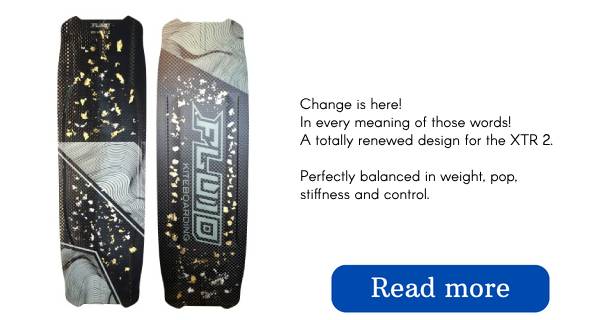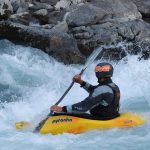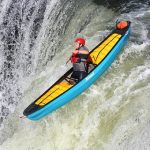You are likely not keen on shuddering feelings of fear and extremely cold water. Very few brave souls are.
A pleasant afternoon spent kayaking is preferable to the feeling of being thoroughly chilled to the bone. But what about the sweltering temperatures, incessant perspiration, and possibility of sun damage?
When you’re out canoeing, the environment can occasionally become overly strenuous. No matter if the sun is scalding or the rain is too heavy, the climate has the capability to influence the span of time you devote on the lake.
A kayak canopy might just be the answer.
Sun shades and bimini tops can be helpful for shielding you from the environment while you are kayaking. We have created this guide to give you an understanding of how these products work and to show you some of our top picks.
Kayak Canopies and Bimini Tops 101: What Is a Bimini Top?
A bimini top is an open-front cover made of canvas that sits atop the kayak’s cockpit, held in place by a metal frame. It provides protection from the sun to those within the cockpit. Many bimini tops can be folded down when they are not being employed, making them highly convenient.
The purpose of having a bimini top is to shield against the weather. We all appreciate spending a relaxing day under the sun while at the water, however, being exposed to too much sunlight and ultraviolet radiation causes a problem. Too much of a good thing applies in this situation.
Taking a breather from the strong summer sunshine will make your adventures more fulfilling and safer. Depending on the model, the kayak canopy can also guard you from a sudden shower.
What Are The Advantages Of Using Kayak Canopies?
A potential benefit of employing a sunshade on your kayak might be that you can remain on the water for a greater duration, particularly in remarkably warm conditions. A bimini top or kayak cover may provide some relief from the glaring heat of the sun.
They can act as a sunscreen, making a pleasant, shadowy area where you can relax while you are paddling. Moreover, these can be beneficial in the event of a downpour while boating, shielding you from getting drenched.
A kayak covering would be beneficial for activities that involve spending lots of time in the water, for example angling.
If you have not thought about taking advantage of the advantages of a kayak cover canopy, then you could be astonished at the different advantages that these practical canvas-tops can bring.
Here are some reasons why you’d need a canopy:
- Provide overhead cover, creating shade and keeping you cool in the intense heat
- Protecting you from harmful sun rays – often prolonged – exposure to UV rays
- Minimizing the chances of sunburn, heat strokes, also known as hyperthermia, permanent skin damage, and dehydration
- Doubling as a rain shelter if sudden weather changes catch you off guard
- Improving the kayak’s visibility with a brightly-colored canopy
It is critical to remember to use sunscreen when going out on a paddle in the day; that’s fundamental sun protection.
Disadvantages Of Using Kayak Canopies
On certain occasions, a canopy could be more of an obstruction than a support, such as in very blustery conditions. It could be problematic if you’re angling or if you’d like to rise up when fishing.
The drawbacks of this may be put to an end by either folding the top down or taking it off if that is a possibility.
The mass and measurements of the bimini could have an effect on the manner in which your kayak functions, which could cause it to be less efficient in the air because of the added height it produces.
There can be some minor drawbacks, such as:
- You’ll be unable to stand up in your kayak, which is mostly an issue for anglers
- The canopy may restrict your view
- Your kayak’s performance will suffer due to the canopy catching wind and acting as a sail
- You’ll potentially have to make permanent modifications to the ‘yak to install a canopy
- Re-entry after a capsize can be a bit trickier
How to Choose A Kayak Bimini Top: Buying Guide & Tips
Check The Canopy’s Size & Coverage
The primary thought that should be considered is how much protection from the sun you want your canopy to provide.
The main objective of getting a sun shield is to guard against heat and ultraviolet rays, correct?
In an optimal situation, the kayak canopy should provide enough shadow coverage for the whole inside of the vessel – while not significantly increasing the kayak’s weight.
Kayak Compatibility
It would appear that the right size and compatibility with a kayak should be clear considerations to bear in mind, but they are often overlooked by people.
Here’s the thing:
No matter the quality or appearance of a bimini top for a kayak, it will not be of benefit to you unless it fits correctly.
It would be best to take a look at the measurements of your kayak right now.
Are you willing to gamble on a kayak bimini top that presumably fits all types of kayaks but is hard to guarantee?
Ease Of Setup
Don’t get a canopy that requires forever to put together; believe me when I say this.
The majority of kayak sun screens come with rods that may be connected easily and have an internal elastic cord, resembling those on a tent, and they can be installed onto your existing gear on the kayak, like fishing rod holders or tracks for equipment. You can install various items to your ‘yak using the straps with D-rings or other attachment points.
Whichever option you choose, the set-up process will be fast and simple.
You are able to permanently secure some bimini models if you are familiar with doing it yourself and confident with drilling into your kayak.
Be aware that if the water situation alters, it is necessary to dismantle and put away the canopy. Do you desire a bimini which can be conveniently taken apart if necessary, and that comes with a storage pouch?
Durability & Materials: Light, UV-Resistant & Waterproof
You have a few choices when making a kayak bimini top such as polyester, nylon, or canvas. All of these materials are suitable for the task. No matter the selection you ultimately make, ensure the material is light, impermeable to water, safe from the sun’s rays, and generally strong.
So, which of these fits that description?
Canvas is significantly sturdier and more air permeable compared to synthetic materials. Synthetic fabrics such as polyester and nylon might not be capable of allowing air to pass through, but they should be able to protect from water.
Acrylic-based marine-grade canvas is a great option since it enables air to pass through, protecting it from condensation, mildew, and mold.
Ideally, it would be best to have both water repellency and UV resistance.
As for the kayak canopy frame and fittings:
Aluminum and fiberglass durability in the tough sea conditions is great while they are still not too heavy and work very well with kayaks. With stainless steel, the extra weight could be problematic.
Weight: The Lighter, The Better
You should be aware that a kayak sun shade is a helpful addition, yet it will also increase the weight of your kayak, particularly if it is already close to its weight limit.
Even if the kayak isn’t fully loaded to the weight limit, you’ll still be taking the bimini top to the waterside, so it’s important that it is not too heavy and easy to move.
Does Color Matter?
The logic behind why most kayak sun shades are usually in paler tones instead of darker hues is apparent. It’s the same as with summer clothes:
Bright hues such as white, yellow, and pale grey do not collect as much heat, allowing you to stay comfortable while in direct sunlight. Additionally, selecting a lighter shade can enhance your kayak’s visibility out at sea, but if you’re an angler wanting to go undetected, it could be that your only choice is to use darker-colored covers for your kayak.
How To Make Your Own Kayak Bimini Top!
- 2 x ½ inch PVC pipes (10 foot long)
- 3 x 45 degree PVC joints
- Fabric (cut to fit your pipe length/desired length and width)
- 3 x eye bolts
- Rope
Step 1:
Construct a channel along the sides of the material so that the tubes can be inserted into the channel.
Step 2:
Connect the material to the pipes, then put three 45 degree joint pieces to the end of the pipes on the narrow/front end of the bimini. This should provide you with a fuller appearance in the front.
Step 3:
Attach the eye bolts to the PVC pipe. One should be placed at the top of the joint, and one close to where the material is connected to the pipes in the back.
Step 4:
Attach PVC pipes to the back of the kayak either side of the seating area to install the bimini. You can secure them in existing rod holders.
Step 5:
Secure rope through the eye bolts. The rope that is attached to the front of your kayak should be lengthy enough to connect one secure tie-down point on the bow of your kayak, through the eye bolt, and to a second tie-down point also located on the bow. The tether that is attached to your kayak and bimini should create a V-shape.
The rope at the back should form a V shape, with the vertex of the V located at the tie-down point behind you.
Best Bimini Tops For Kayaks, Canoes And Small Boats
1: Adventure Canopies Kayak Sun Shade
- Canopy length: 54 inches
- Weight: 4.5 pounds
The Adventure Canopies kayak shade is a special covering intended just for kayaks. There is a range of sizes available, from those meant for 9 to 11 foot kayaks, to those suitable for kayaks longer than 12 feet, so you can find one that fits your boat correctly. It also has a layout with seats that are raised up.
No matter what size option you go for, the canopy will always be 54 inches long, providing enough protection from the sun. This item has a fabric covering crafted to diminish both the heat and glow of the sun and there are fiberglass poles designed like a tent that can be collapsed for keeping away.
The four-point attachment system makes it sturdy enough to withstand strong winds and choppy waters, making it a great option for anyone who plans to do some far-off paddling.
2: WindPaddle Sun Shade
- Canopy Length: 36 inches
- Weight: 2.5 pounds
This product, the WindPaddle Sun Shade, is crafted with kayakers in mind, specifically medium-sized kayaks, and works to shield them from the sun’s rays. The hue of gold gives a Sun Protection Factor (SPF) of about 10, so it would be wise to still maintain sufficient sun protection, alongside the sunshade.
This design is adaptable and attaches to your kayak by utilizing the existing D-rings or loops already present. This item is not created for gusty weather conditions, but it is sturdy enough to face gusts of up to 10 mph.
In the case of a particularly powerful gust of wind, the canopy is arranged to lean back against your boat, thus not causing it to overturn.
3: Lixada 4-Person Inflatables Boat Sun Shelter
- Canopy length: 72.8 inches (59 inches wide)
- Weight: 3.25 pounds
This sun shelter from Lixada has been tailored to fit the needs of inflatable watercrafts, accommodating up to four people. This item comes with a PVC canopy that shields you from the rain and sun. It is compatible with blow-up kayaks and inflatable vessels.
This attachment system hooks onto the D-rings of your vessel and has telescopic aluminimum tent poles to maintain the canopy in place.
This sun shade is quite big which makes it suitable for wide fishing kayaks and inflatables. Furthermore, it could keep the kayak and its stuff dry if you’re paddling during rainy weather.
Cooling Off (Conclusion)
You are probably aware now of whether a bimini top or kayak canopy could be beneficial to your kayak. A sunshade can be a useful addition to one’s yak.
Using an umbrella can help you avoid sunburns and keep dry from the rain, allowing you to stay out longer on the water. If you’re into fishing, a kayak cover could be great for making your kayaking fishing experience more pleasant.
Be sure to consider the size of your boat and if the cover will be suitable for your specific kayak before you purchase one.




